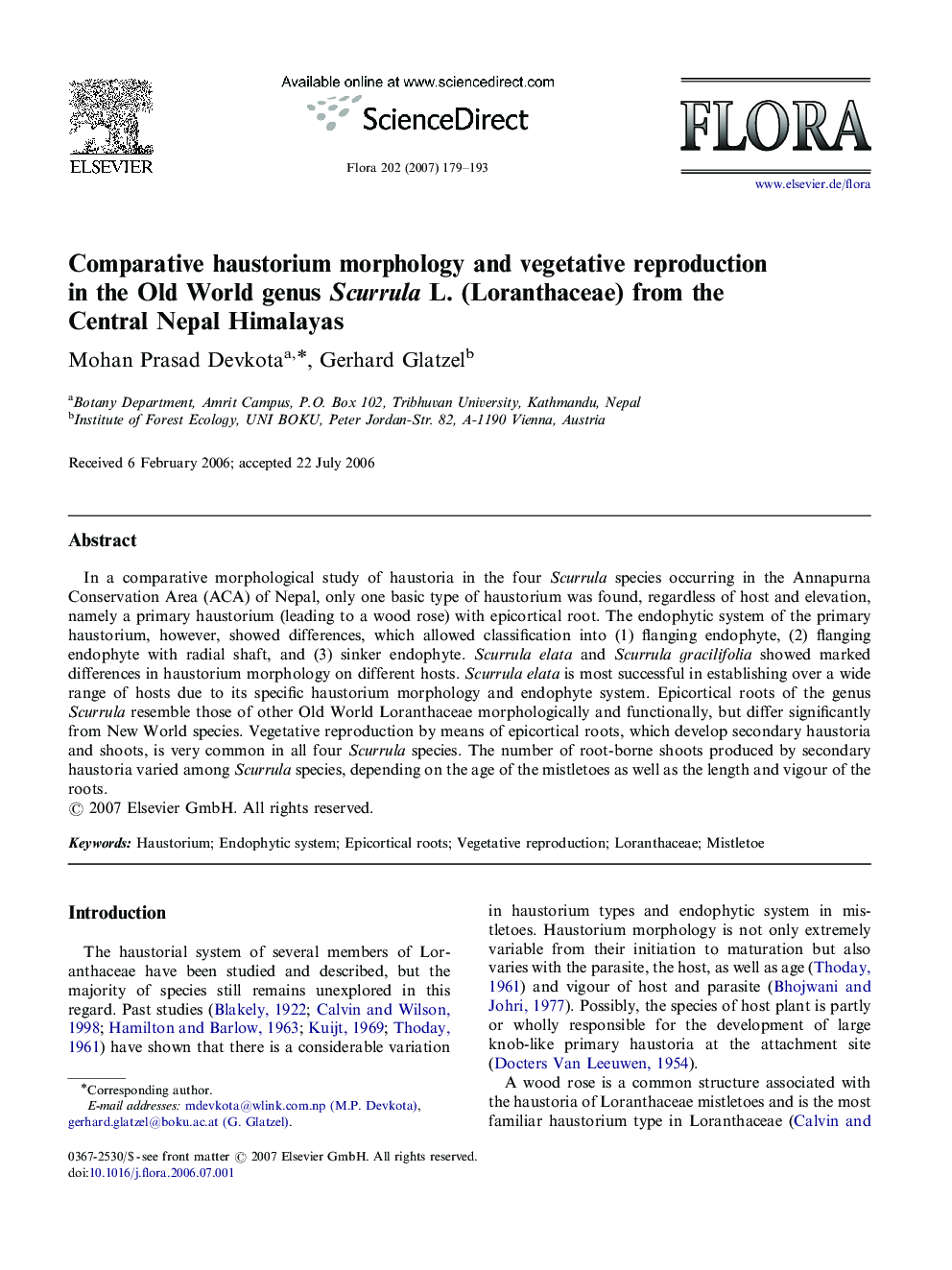| Article ID | Journal | Published Year | Pages | File Type |
|---|---|---|---|---|
| 2180417 | Flora - Morphology, Distribution, Functional Ecology of Plants | 2007 | 15 Pages |
In a comparative morphological study of haustoria in the four Scurrula species occurring in the Annapurna Conservation Area (ACA) of Nepal, only one basic type of haustorium was found, regardless of host and elevation, namely a primary haustorium (leading to a wood rose) with epicortical root. The endophytic system of the primary haustorium, however, showed differences, which allowed classification into (1) flanging endophyte, (2) flanging endophyte with radial shaft, and (3) sinker endophyte. Scurrula elata and Scurrula gracilifolia showed marked differences in haustorium morphology on different hosts. Scurrula elata is most successful in establishing over a wide range of hosts due to its specific haustorium morphology and endophyte system. Epicortical roots of the genus Scurrula resemble those of other Old World Loranthaceae morphologically and functionally, but differ significantly from New World species. Vegetative reproduction by means of epicortical roots, which develop secondary haustoria and shoots, is very common in all four Scurrula species. The number of root-borne shoots produced by secondary haustoria varied among Scurrula species, depending on the age of the mistletoes as well as the length and vigour of the roots.
